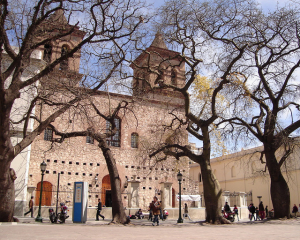 St. Ignatius of Loyola , founder of the Order , was born in 1491 in the heart of a noble military family . By 1522 he decided to lay down arms and join the ranks of the church. With his studies started to be ordained as priest , known in Paris to Francisco Javier Diego Lainez , Alfonso Samerón and Peter Faber , who share with the formation of a new order, the Society of Jesus , under the slogan ” For the greater glory of God.” From there fight for the education of youth and evangelistic missions in the new conquered territories. Since then, the Order of St. Ignatius of Loyola would be known by the academic prestige of their schools and universities.
St. Ignatius of Loyola , founder of the Order , was born in 1491 in the heart of a noble military family . By 1522 he decided to lay down arms and join the ranks of the church. With his studies started to be ordained as priest , known in Paris to Francisco Javier Diego Lainez , Alfonso Samerón and Peter Faber , who share with the formation of a new order, the Society of Jesus , under the slogan ” For the greater glory of God.” From there fight for the education of youth and evangelistic missions in the new conquered territories. Since then, the Order of St. Ignatius of Loyola would be known by the academic prestige of their schools and universities.
The Jesuit Block in Córdoba includes a built by the Church of the Society of Jesus , the Private Chapel , the residence of the Jesuits and the Rector of the National University of Córdoba , former High School of the Jesuit block.
In 1599 the Jesuits settled in Córdoba , in the solar loan from the city council , where a small chapel that was not big enough to house clergy, students and 1,589 faithful existed . Therefore, from 1,606 start building works that would shape the current Jesuit Block .
Constructions on : Colegio Máximo ( 1,610 ) University ( 1,622 ) , Convictorio Royal College of Our Lady of Monserrat (founded in 1687 but installed in its present location in 1782 , after the expulsion of the Company) and novitiate are added ( to 1,710 ) .
The Domestic Church and Chapel were built between 1,644 and 1,671 . The old chapel , one of the oldest ecclesiastical building that remains in the country , is the Sacristy of the Private Chapel . The Jesuit Estancias of Córdoba are a singular example of the productive organization of the religious of the Society of Jesus in the country.
Stays of Jesus Maria, Caroya , Santa Catalina , Alta Gracia and Candelaria can be traversed in a circuit of 250 km through picturesque mountain roads .
Jesuit Block
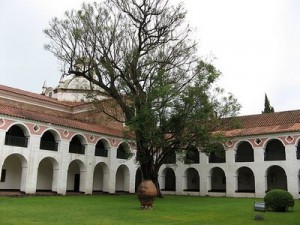 In 1608 work began that led to the current Jesuit Block , located in the heart of the historic center of the city of Cordoba. It consists of different constructs were progressively adding : The High School , the Church of the Society of Jesus , The Private Chapel , the novitiate and the Monserrat College. The Jesuit Block is the work oldest standing colonial era houses Córdobal city and its importance was recognized by UNESCO declared it a World Heritage Site. Audio Guide Number : (0351) 5262606 /
In 1608 work began that led to the current Jesuit Block , located in the heart of the historic center of the city of Cordoba. It consists of different constructs were progressively adding : The High School , the Church of the Society of Jesus , The Private Chapel , the novitiate and the Monserrat College. The Jesuit Block is the work oldest standing colonial era houses Córdobal city and its importance was recognized by UNESCO declared it a World Heritage Site. Audio Guide Number : (0351) 5262606 /
Estancia Jesús María
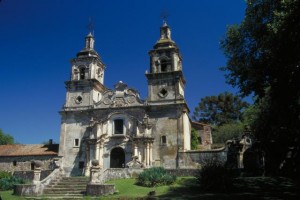 It was the second organized by productive core of the Jesuit system. It was constructed in 1618 on land that indigenous sanavirones recognized by the name of Guanusacate . This stay was characterized for its wine production, which reached a high level of development and quality, and that has continued over time , forming a characteristic of the area.
It was the second organized by productive core of the Jesuit system. It was constructed in 1618 on land that indigenous sanavirones recognized by the name of Guanusacate . This stay was characterized for its wine production, which reached a high level of development and quality, and that has continued over time , forming a characteristic of the area.
Estancia Santa Catalina
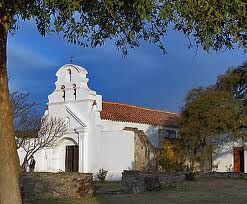 Founded in 1622 , is the largest of all . His church is one of the best examples of the ” colonial baroque” in Argentina , with strong influence of Central European Baroque architecture. La Estancia was the great center of agricultural production ( thousands of heads of cattle, sheep and mules ) , besides the obraje with their looms , rigs, blacksmithing, carpentry, Fuller , the two mills , the great breakwater and underground water supply coming from Ongamira , in the hills several miles away.
Founded in 1622 , is the largest of all . His church is one of the best examples of the ” colonial baroque” in Argentina , with strong influence of Central European Baroque architecture. La Estancia was the great center of agricultural production ( thousands of heads of cattle, sheep and mules ) , besides the obraje with their looms , rigs, blacksmithing, carpentry, Fuller , the two mills , the great breakwater and underground water supply coming from Ongamira , in the hills several miles away.
Estancia La Candelaria
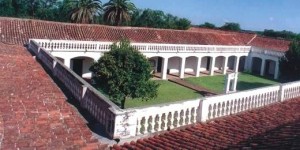 Nestled in the Sierra . Put Stone thick walls , with only two small access doors and openings tell us about any defensive about Aboriginal attacks. Organized and consolidated from 1683 , was the best example of a predominantly rural setting bottlenose serrano producer ranching , real traffic destined to and from the Alto Peru .
Nestled in the Sierra . Put Stone thick walls , with only two small access doors and openings tell us about any defensive about Aboriginal attacks. Organized and consolidated from 1683 , was the best example of a predominantly rural setting bottlenose serrano producer ranching , real traffic destined to and from the Alto Peru .
Stay Caroya
It is the first rural property held by the Company in 1616. was sold in 1661 to Ignacio Duarte Quiros priest , founder of the College of Monserrat Convictorio , who donated to support the College and said that the house served as a residence for domestic rental thereof.



